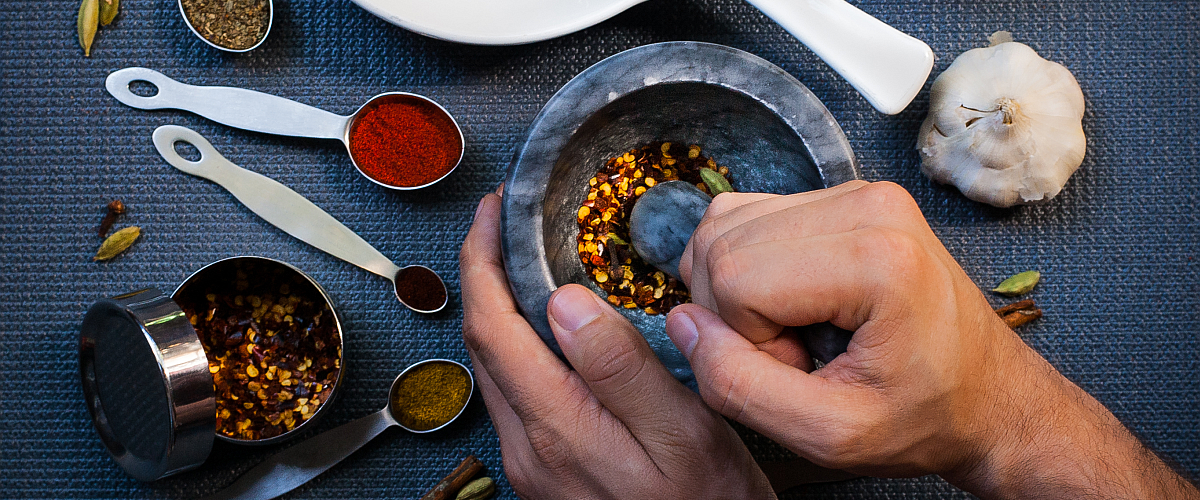A dash here, a shake or two there. For most of us, salt is a common, everyday cooking ingredient. It can be found in the items we buy and in the recipes we love. That’s because salt makes food taste good and, as humans, we’re actually wired to like it.
In moderation, that’s perfectly all right—salt contains the nutrient sodium, which our bodies need to maintain a proper balance of water and minerals, among other things. But as many of us have heard, too much can be bad news for your health.

“That’s why we at Aramark have teamed up with the American Heart Association to decrease the amount of sodium in the food we serve, as part of our Healthy for Life initiative,” explains Aramark Chef and Registered Dietitian Laura Quinn. “To date, we’ve reduced sodium by 14 percent on key menus—well on our way to our goal of achieving 20 percent by the end of 2020.”
There are steps you can take to decrease your salt intake, too! With her experience in finding healthier ways to deliver great flavor, Laura turned out to be the perfect person to continue our sodium conversation. Here she shares some “spicy” tips and tricks for cooking with less salt.
NEVER FEAR, SPICES ARE HERE
The idea is nothing new: We have been cooking with spices and dried herbs for centuries. But today many people don’t understand how to use them. “It’s easy to get hung up on pairing herbs and spices with the right foods, and combining them in the right quantities,” Laura elaborates. “My advice: Don’t overthink it!”
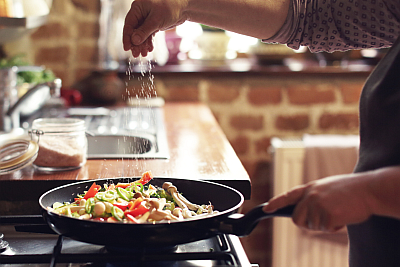
Whether you’re making a marinade or a dry rub, mixing ingredients will yield deep, satisfying flavor. That’s why your first step is to start with a well-stocked pantry. With the right jars at your fingertips, you can add flavor to anything—from chicken to popcorn to fresh produce—without having to reach for the salt shaker. (Bonus: Pure herbs and spices are sodium-free and essentially calorie-free, which means you can use as much as you want!)
Laura recommends stocking up on these basics:
| Spices | Herbs |
| Chili Powder Cloves Coriander Cumin Garlic Powder Mustard Powder Nutmeg Onion Powder Paprika Turmeric |
Basil Chives Dill Lemongrass Mint Oregano Parsley Rosemary Sage Tarragon |
BLEND FOR A BOOST
Spend a little more time in the spice aisle, and you’ll notice an array of spice and herb “blends.” Sounds like the perfect shortcut, right? Not so fast, says Laura: “While convenient, these products can sometimes have salt as a leading ingredient. Check the nutrition label to be sure you’re getting the herb or spice you’re looking for, without the salt.”
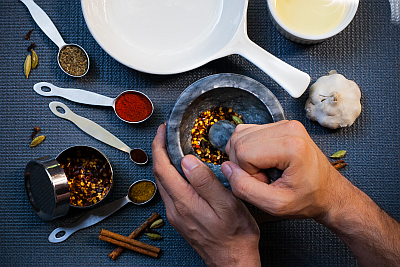
Better yet, make your own blend at home (here’s a great no-salt blend to try)! “The great thing about this is you can include what you love and skip what you don’t,” Laura points out. “And you always know how fresh it is.”
Don’t be afraid to get creative here. Test some unexpected pairings. If you love the individual flavors, they probably are even better together. Each member of the family can have his or her own shaker at the ready. Adjust your signature blends over time, tinkering with ingredients and amounts.
Still can’t live without your trusty store-bought taco or BBQ seasoning? “See if it comes in a lower-sodium version,” Laura suggests. “You may not even taste the difference.”
GO GLOBAL
If you need more inspiration, look no further than your favorite cuisines. “The notes from spices and herbs are what distinguish one culture’s cuisine from another,” says Laura. “Think about those familiar aromas—you can recognize them before you even take your first bite.”
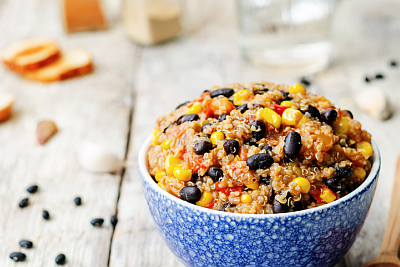
Here is her cheat sheet for many common flavor profiles, plus some recipes that put them to good use:
Indian: Cumin, coriander, cinnamon, turmeric, ginger, mustard powder, and chili powder make the perfect blend. Try: Tandoori Chicken Wrap or Chicken & Chickpea Shawarma for warm, savory flavor.
Italian: Pick up some garlic powder, onion powder, basil, rosemary, thyme, and oregano. Try: Our Spicy Shrimp and Penne or Grilled Veggie Pizza—sure to bring the Italian zest you’re looking for.
Mexican: Cue the cumin, garlic powder, and oregano. Craving some heat? Kick things up a notch with chili powder. Try: Mexican Street Corn Salad or Corn & Quinoa Salad.
FLAVOR AS A FAMILY
One of Laura’s favorite things about testing out new spice pairings is having her three-year-old son serve as sous chef!
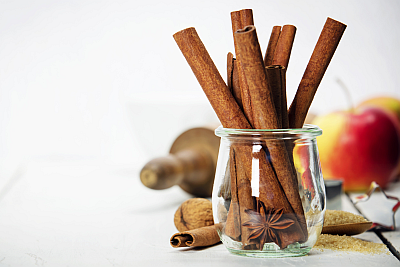
“He loves to be in the kitchen with me, and this is a safe task for him at this age,” Laura tells us. “He can dump, mix, and pour ingredients into smaller storage containers. We have a great time together, and I know I’m teaching him to enjoy cooking with a wide range of flavors.”
Remember those signature blends? Add a dose of fun by letting your kids name their special mix. Get your hands on some blank labels and see what they come up with. (Green Unicorn Pixie Dust? Sounds delish!)
A SALTY SITUATION
It’s okay to sprinkle on the salt or pick up your go-to salty (and sometimes pre-packaged) treat from time to time. But you can keep your overall sodium intake in check by also leaning on the vibrant taste of herbs and spices.
“Think of it as expanding your culinary-range in the kitchen,” Laura advises. “You’ll naturally use less salt as a result. Over time, your taste buds may even change and you’ll come to prefer less salt.”
Still have a few lingering questions on salt? Take a look at our past conversation with the AHA for an expert download. And for more ways to add flavor without the salt, be sure to check out our recipe page.
Note: Since everyone’s health history and nutritional needs are so different, please make sure that you talk with your doctor and a registered dietitian to get advice about the diet and exercise plan that‘s right for you.

